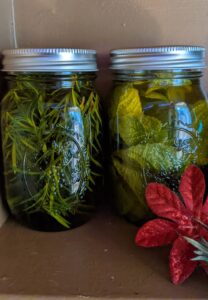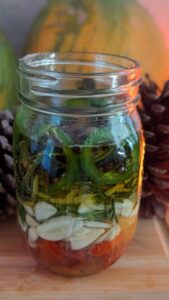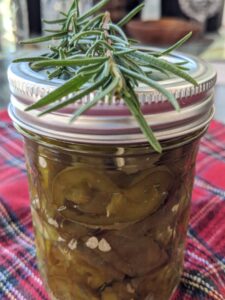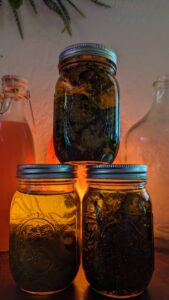Title: Canning 101: The Ultimate Guide to Preserving Food at Home
Introduction
 As we become increasingly aware of the benefits of eating homemade and locally-sourced foods, canning has made a major comeback. This age-old preservation technique is not only a fantastic way to save money and reduce food waste, but also a great opportunity to create delicious and nutritious meals all year round. In this guide, we’ll explore the basics of canning, including necessary equipment, techniques, and safety tips to help you get started on your food preservation journey.
As we become increasingly aware of the benefits of eating homemade and locally-sourced foods, canning has made a major comeback. This age-old preservation technique is not only a fantastic way to save money and reduce food waste, but also a great opportunity to create delicious and nutritious meals all year round. In this guide, we’ll explore the basics of canning, including necessary equipment, techniques, and safety tips to help you get started on your food preservation journey.
I. Understanding Canning
Canning is a process that involves sealing food in an airtight container and heating it to a specific temperature to kill off harmful microorganisms. This method effectively preserves the quality, taste, and nutritional content of food for extended periods of time.
There are two main canning methods: water bath canning and pressure canning. Water bath canning is suitable for high-acid foods, like fruits, jams, and pickles. Pressure canning is necessary for low-acid foods, such as vegetables, meats, and poultry, as it requires higher temperatures to eliminate bacteria like Clostridium botulinum, which can cause botulism.
II. Equipment and Supplies
 Before you start canning, make sure you have the right equipment and supplies on hand:
Before you start canning, make sure you have the right equipment and supplies on hand:
Canning jars: Glass jars specifically designed for canning come in various sizes, with regular or wide-mouth openings. They can be reused, but always check for cracks or chips before using them.
Lids and bands: Two-piece lids consist of a flat metal lid and a metal screw band. The flat lid is single-use only, while the screw band can be reused if it’s in good condition.
Canner: A water bath canner is a large pot with a fitted rack to hold jars. For pressure canning, you’ll need a pressure canner, which is designed to reach and maintain the necessary high temperatures.
Jar lifter: This handy tool is essential for safely handling hot jars during the canning process.
Canning funnel: A wide-mouth funnel makes it easier to fill jars without spilling food.
Bubble remover: A plastic or silicone spatula to remove air bubbles trapped in the jars.
III. Canning Process
 Follow these general steps to can your food:
Follow these general steps to can your food:
Prepare your food: Wash, peel, chop, or cook your ingredients as needed.
Sterilize jars and lids: Wash the jars, lids, and bands in hot, soapy water, and rinse them well. Sterilize the jars by boiling them for 10 minutes, and keep them hot until you’re ready to fill them.
Fill the jars: Use a canning funnel to fill jars with food, leaving the recommended headspace (usually 1/4 to 1/2 inch). Remove air bubbles with a bubble remover, and wipe the jar rims clean with a damp cloth.
Seal the jars: Place a flat lid on each jar, and screw the band on just until fingertip-tight – don’t overtighten.
Process the jars: Follow the appropriate canning method for your food – water bath or pressure canning. Make sure to use a trusted recipe and follow the recommended processing times and temperatures.
Cool and store: Once the jars are finished processing, carefully remove them using a jar lifter, and let them cool on a towel or cooling rack for 12-24 hours. Check the seals, label and date the jars, and store them in a cool, dark place.
IV. Safety Tips
Canning can be a fun and rewarding process, but it’s important to follow some safety guidelines:
- Always use appropriate recipes and processing times from trusted sources, such as the National Center for Home Food Preservation or reputable cookbooks.
Inspect your jars, lids, and bands for damage before using them. Damaged equipment can compromise the canning process and lead to spoilage.
Be vigilant about cleanliness. Wash your hands, work surfaces, and utensils frequently to minimize the risk of contamination.
Never consume canned food if the jar’s seal is broken, if the contents are discolored, moldy, or have an off smell, or if the jar is leaking or bulging. These are all signs of spoilage and can indicate the presence of harmful bacteria.
If you’re new to canning, start with simple recipes and high-acid foods, like jams or pickles, which carry a lower risk of contamination. As you gain experience, you can move on to more complex recipes and low-acid foods.
V. Benefits of Canning
 Incorporating canning into your food preservation routine comes with a variety of benefits:
Incorporating canning into your food preservation routine comes with a variety of benefits:Cost savings: Canning seasonal produce when it’s abundant and less expensive can save you money throughout the year.
Reduced food waste: Preserving excess produce or leftovers by canning helps reduce food waste and makes the most of your resources.
Healthier meals: Homemade canned foods often contain fewer additives and preservatives than their store-bought counterparts, making them a healthier option.
Environmental benefits: Canning locally-sourced produce reduces the environmental impact of transportation and packaging associated with commercially canned foods.
Self-sufficiency: Knowing how to preserve your own food can give you a sense of independence and self-reliance, as well as a valuable skill to pass on to future generations.
Conclusion
Canning is a time-tested and rewarding method for preserving food at home. With the right equipment, some patience, and attention to safety, you can enjoy delicious and nutritious meals all year round. Whether you’re a seasoned canner or a beginner, there’s always something new to learn and try in the world of food preservation. So, gather your supplies and start canning today!